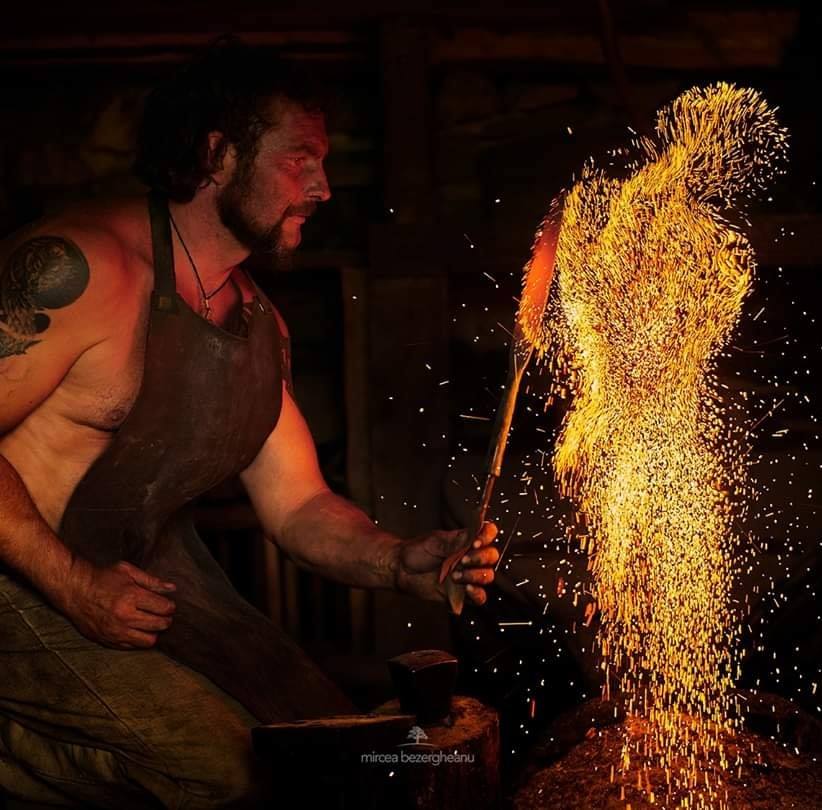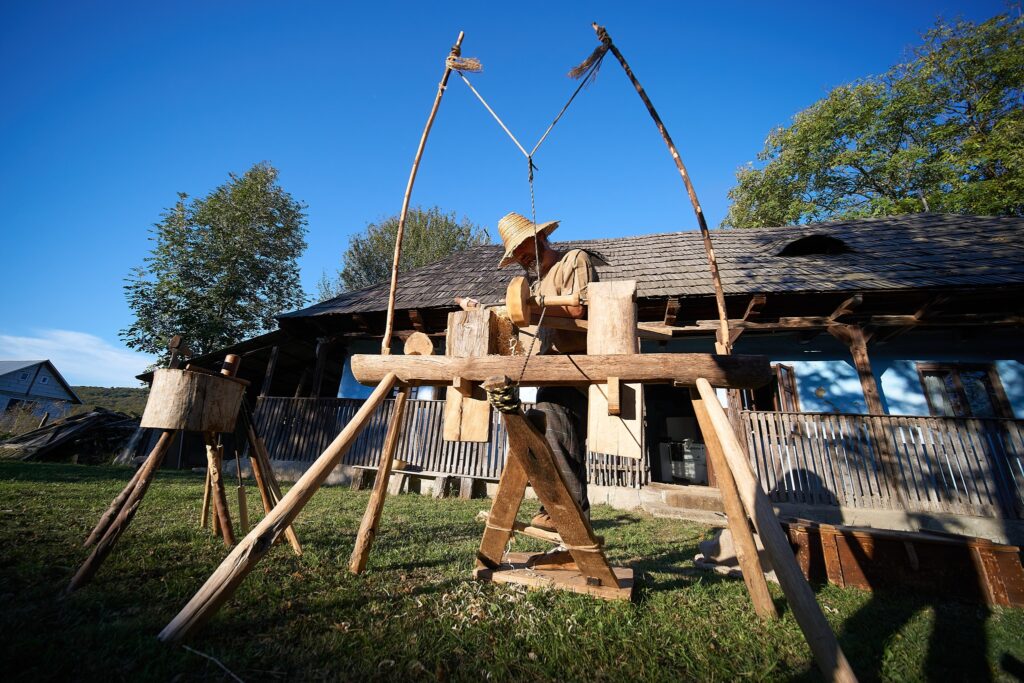Handmade Craft
As it happened in other countries, experimental archeology has also developed in Romania in recent decades. This field of study brings real benefits to research and helps a lot in understanding some aspects that, until now, have been approached only from a theoretical perspective. Several craftsmen specializing in various trades try to reproduce objects similar to those used in other historical eras. During the production process, they record work stages, completion times, difficulties encountered and other observations related to this process.
At the organizers proposal, you can discover some of the crafts practiced in Romania, within the prehistoric and protohistoric communities, through four artisans.
THE BLACKSMITH
Emanuel Bezeriță – Komakiza

Over a period of time that exceeds a decade, he turned his attention to the craft of blacksmithing, whose secrets he continues to decipher one by one. Fascinated by the Dacian civilization, he makes tools and especially weapons, starting from the originals, discovered through archaeological research.
He is constantly documenting himself in libraries and study rooms, but in order to better understand the way of life of ancient artisans, he built his own workshop and a home, without many elements of comfort by today’s standards.
THE JEWELER
Andrei Mihai – Oroles
Fascinated by antiquity, he participated in Reenactment festivals, being one of the most important representatives of the Terra Dacica Aeterna Association, an organization whose objective is historical reconstruction for the period of the Daco-Roman wars.
He was drawn from childhood to crafts, to make different objects. He worked in the field of glass processing (fusion and painting), then wood (carving folk art).
He studied history and has a master’s degree at Babes-Bolyai University in Cluj Napoca. The specialization concerned the Second Iron Age and especially the goldsmithing of the period.
In the environment of artisans, he became known as „Oroles” and is passionate about experimental archaeology. From this perspective, he combines metalworking with the reproduction of pieces of jewelry from the ancient cultural environment of this part of Europe.
In order to reproduce as much of the ancient techniques and technologies as possible, he tried to reconstruct and use the tools of an ancient goldsmith.
THE WOOD TURNER

THE CRAFTSMAN IN STONE, BONE AND HORN
Barbu Marius
He is a doctor in historical sciences and works as an archaeologist at the Deva Dacian and Roman Civilization Museum. It can be said about him that, like all the other artisans presented, everything he does, he does with passion. He is fascinated by history, facts and events of the past. Although the archaeological research activity in which he is involved has as its object mainly the Roman era, his interest in experimental archeology led him to explore other horizons as well.
He was equally concerned with blacksmithing, pottery and goldsmithing, but in the workshop he will coordinate in Timișoara, he will reveal something of the secrets of two crafts. He will share with us his experience on ways of processing stone in prehistory. On the other hand, it will show us how the bones or horns of animals are transformed into objects of adornment, or into game pieces, using simple, easy-to-make tools.
